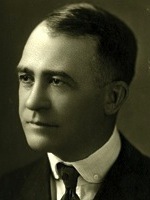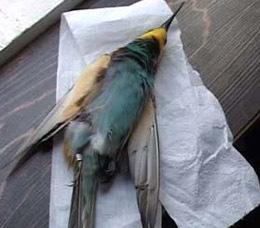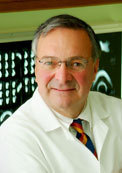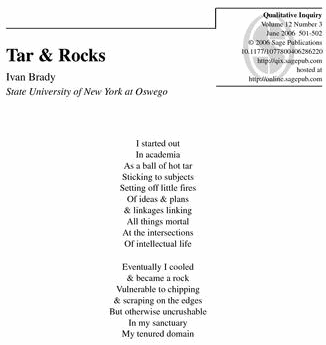Marc Abrahams's Blog, page 572
May 21, 2012
Hiccups: An alternate, lollipop solution, reportedly, sort of
The New York Times “You’re the Boss” blog reports about a teenager who is starting a hiccup-remedy business, possibly because neither she nor her doctors did much Internet research, failed to learn about the digital hiccup treatment devised by Ig Nobel Prize winner Dr. Francis Fesmire. The report:
To silence her stubborn hiccups during the summer of 2010, Mallory Kievman tried swallowing saltwater, making herself gag, eating a spoonful of sugar, sipping pickle juice and drinking a glass of water upside-down. Nearly two years and 100 attempted folk remedies later, the 13-year-old is preparing to lead a team of M.B.A. students from the University of Connecticut in building a company that can bring her invention — Hiccupops, or hiccup-stopping lollipops — to market this summer.
Dr. Francis Fesmire [also not pictured here] was awarded an Ig Nobel Prize in medicine, in 2006, for his medical case report “Termination of Intractable Hiccups with Digital Rectal Massage”
(Thanks to investigator Rose Fox for bringing this to our attention.)

Cheese and dogs and a pill to kill mosquitoes
Bart Knols explains—and also demonstrates—three related things: How to use cheese and dogs and a new kind of pill to kill malaria mosquitoes. Knols and Ruurd de Jong were awarded the 2006 Ig Nobel Prize in biology for showing that the female malaria mosquito Anopheles gambiae is attracted equally to the smell of limburger cheese and to the smell of human feet. Here’s video of his TEDx talk at Maastricht:

May 20, 2012
The wisdom of flerds [JER video]
As part of their ongoing commitment to postmodern range sciences, the USDA-ARS, Jornada Experimental Range, Las Cruces, New Mexico, has prepared a video profiling the concept of a flerd. (defined thus:)
“A group of livestock containing two or more species which stay together under free-ranging conditions is defined as a flerd”

Hamburgers, and nothing but, in a man in the 1930s
 The Minnesota Medical foundation described, a while ago, a hamburgers-and-human experiment that took place a good while before that. Their blog in 2008 called it “an unusual hamburger experiment” done in the 1930s by Jesse McClendon [pictured here] of the University of Minnesota’s Department of Physiological Chemistry. Some details:
The Minnesota Medical foundation described, a while ago, a hamburgers-and-human experiment that took place a good while before that. Their blog in 2008 called it “an unusual hamburger experiment” done in the 1930s by Jesse McClendon [pictured here] of the University of Minnesota’s Department of Physiological Chemistry. Some details:
He planned to feed a single experimental subject only White Castle hamburgers—including the bun, onions, and pickles—and water for 13 weeks.
A willing subject presented himself: Bernard Flesche, a U of M medical student working his way through school. Flesche kept a diary during the ordeal. “He started out very enthusiastic about eating 10 burgers at a sitting,” notes his daughter, Deirdre Flesche, “but a couple of weeks into it, he was losing his enthusiasm.” His sister frequently tried to tempt him with fresh vegetables, but Flesche allowed nothing but White Castle Slyders™ to pass his lips….
As described there, the experiment was part of a public relations campaign run by the man who owned the White Castle hamburger shops.
(Thanks to investigator Dany Adams for bringing this to our attention.)
BONUS: We have not managed to find a published report by McClendon. If you know of one, we’d love to see it.
BONUS: Nancy Shute’s report, on NPR, about a recent experiment giving (bunless, pickle-less) burgers to mice. (Thanks to investigator Scott Langill for bringing it to our attention.)

May 18, 2012
Rocks/Tar Rock Star: Ivan Brady
 Today’s Rocks/Tar rock star of the day is Ivan Brady, Distinguished Teaching Professor Emeritus and previous Chair of Anthropology at the State University of New York at Oswego, former president of the Society for Humanistic Anthropology and Chair of the Association for Social Anthropology in Oceania, and also former book review editor of the American Anthropologist.
Today’s Rocks/Tar rock star of the day is Ivan Brady, Distinguished Teaching Professor Emeritus and previous Chair of Anthropology at the State University of New York at Oswego, former president of the Society for Humanistic Anthropology and Chair of the Association for Social Anthropology in Oceania, and also former book review editor of the American Anthropologist.
Professor Brady is the author of ”Tar & Rocks” (Qualitative Inquiry, vol. 12, June 2006, pp. 501-502), the beginning of which is reproduced below:
BONUS: The completely unrelated rocks/tar study “Tar-decomposing activity of carbonate rocks under high CO2 partial pressure“

Turkey captures bird (not a turkey) alleged to be a spy
 Spying birds get smaller and more sophisticated. Last year a vulture (Gyps fulvus) made the news after it was caught in Saudi Arabia, wearing a GPS-transmitter marked ‘Tel Aviv University’ and last week, the BBC reports, an other alleged Israeli spy was found dead near the town of Gaziantep in southern Turkey. The bird, an European bee-eater (Merops apiaster) had caught the attention of locals because it was wearing a ring around its leg with the inscription ‘Israel Tel Aviv’ and the (spy)number C43917. More importantly the bee-eaters left nostril was much larger than the other and ‘big enough to hide spy equipment’.
Spying birds get smaller and more sophisticated. Last year a vulture (Gyps fulvus) made the news after it was caught in Saudi Arabia, wearing a GPS-transmitter marked ‘Tel Aviv University’ and last week, the BBC reports, an other alleged Israeli spy was found dead near the town of Gaziantep in southern Turkey. The bird, an European bee-eater (Merops apiaster) had caught the attention of locals because it was wearing a ring around its leg with the inscription ‘Israel Tel Aviv’ and the (spy)number C43917. More importantly the bee-eaters left nostril was much larger than the other and ‘big enough to hide spy equipment’.
The dead bird was handed over to the Gaziantep Provincial Directorate of Agriculture and Livestock Animal Health Division Director Akif Aslanpay, who noticed the bee-eaters left nostril was indeed larger than the other and therefore alerted the national security agency. Later the dead bird was declared to be not a spy.
‘The Handbook of the Birds of the Western Palearctic‘ does not give any statistics on nostril size in Merops apiaster, but mentions: ‘Short bristle-like feathers at gape and side of bill, almost covering nostril’.
BONUS: Video of local officials investigating the alleged spy.

Adventures in Academia: Retracted plagiarism of plagiarism
Today’s Headline of the Day appears in the Retraction Watch blog:
Astrophysics retraction trail includes paper that plagiarized another already retracted for… plagiarism

May 17, 2012
Towards a remote-controlled cow [JER video]
Complementing their postmodern approach to range science, the USDA-ARS, Jornada Experimental Range, Las Cruces, New Mexico, has pioneered the development of the remote-controlled cow. Their directional virtual fencing (DVF™) electronics package is carried by the cows on an ear-a-round (EAR™). The results can be seen here.
BONUS (unrelated): Nick McKaig sings Rossini’s “William Tell Overture” a capella, solo. (HT @NearaRussell):

Headline of the Day: Explosive Understatement
Today’s Headline of the Day is from a press release issued by New York Medical College. The headline is:
Research findings show brain injury to soldiers can arise from exposure to a single explosion
BONUS: If you know of a study showing that brain injury to soldiers CANNOT arise from exposure to a single explosion, we would love to hear about it.
(Thanks to investigator Zach Messer for bringing this to our attention.)

Academic Stress May Lead to Bad Teeth
 A new study builds, in a sense, on the work of 1996 Ig Nobel economics prize winner Dr. Robert Genco [pictured here] of the University of Buffalo. Dr. Genco was honored then for his discovery that “financial strain is a risk indicator for destructive periodontal disease.” The new study is:
A new study builds, in a sense, on the work of 1996 Ig Nobel economics prize winner Dr. Robert Genco [pictured here] of the University of Buffalo. Dr. Genco was honored then for his discovery that “financial strain is a risk indicator for destructive periodontal disease.” The new study is:
“Academic stress as a risk factor for dental caries,” Cynthia Mejía-Rubalcava, Jorge Alanís-Tavira, Liliana Argueta-Figueroa, Alejandra Legorreta-Reyna, International Dental Journal, vol. 62, no. 3, June 2012, pp. 127-31. The authors, at the Autonomous University of the State of Mexico (UAEMex), Toluca, Mexico, report:
“Conclusions: Moderate to high levels of academic stress, younger age and lower salivary flow rate represent risk factors for the development of dental caries in students.”
(Thanks to investigator Sergio Uribe for bringing this to our attention.)
BONUS: And of course, there’s the possibly unrelated question of sugar, sugar, sugar, sugar

Marc Abrahams's Blog
- Marc Abrahams's profile
- 14 followers
























